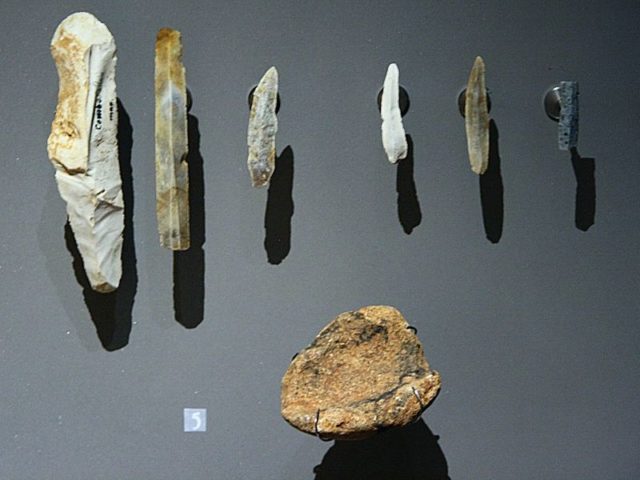Tools have been a major sign of evolution for millions of years. The tools we use today are vital to our society, but we still use basic instruments such as hammers and knives in much the same way that our ancestors did hundreds of thousands of years ago, albiet slightly more refined versions.
Our ancestors literally started at the bottom by using rocks to help them through daily life.

Just recently, experts found out that the use of stone tools was thought to have originated by the Homo genus nearly 2.6 million years ago. However, a new discovery of a collection of stone tools in Kenya has proven otherwise. These Kenyan tools pre-date the Homo genus’ tools by 700,000 years! These new tools could completely rewrite the history of early humans.
The tools found in Kenya are believed to have been made nearly 3.3 million years ago by the hominin species. They had made anvils, hammers, and cores. The reason experts believe the hominin species created these tools is because they had a particularly strong grip and better motor controls than the other species’ did.
The idea of the stone-tool culture is thought to have been around for 2.6 million years. This is merely based on what evidence has been found in Ethiopia. The artifacts found in Ethiopia were found near one of the earliest Homo fossils known as Homo habilis. He was eventually named the “handy man.” His culture has been described as Oldowan.
The newer tools found at the Lomekwi 3 site next to Lake Turkana in Kenya actually pre-date the Oldowan tools by 700,000 years. The lead researcher, Sonia Harmand from Stony Brook University in New York believes they have found the oldest tools yet.

Harmand and her colleagues from the Hebrew University in Jerusalem said that they had found worked cobbles during the dig. In fact, they are more primitive than the ones found in Ethiopia, but were made by a group that had many more cognitive abilities.
After examining the tools further, the experts saw that there were shapes and markings on the tools that had indicated they were used rather vigorously in order to pound the items or make the sharper flakes of stone.
What is amazing is that the experts can go so far as identifying the hand motions that were required for making these shapes. They said that the motions used were more similar to those that were used by chimpanzees to crack nuts rather than the way the people of the Oldowan cultures used their tools.
The newer finds of the tools led experts to believe that the pre-humans had expressed human behavior, challenging the first beliefs that our ancestors were the first to smash two rocks together in order to create what was known as the first “technology.”
The tools found were the first pieces of evidence that there was an even earlier group who had the thinking abilities to figure out just how to make the sharp tools. This dig is going to be documented as the “new beginning to an archaeological record.”
An article said that the whole site being found was quite a surprise. It rewrites many things that were found throughout history.
Harmand said that these new tools being found shed light on the unknown period of the hominin behavior. These tools show more than fossils alone. They can show the experts just how the hominin species used to think and use tools in order to benefit themselves and daily life.
The hominin species are actually a group that makes up the modern humans such as the Homo sapiens. Considering that, the hominin are actually rather close to us modern humans.
Many anthropologists believe that the relatives of the Homo sapiens were the first to make stone tools.
The researchers on the dig still can’t say who exactly made the tools, however, they had found a skull which suggested that it could’ve been Kenyanthropusplatytops who had lived 3.3 million years ago. The skull was found back in 1999 about a mile from the tool site.
